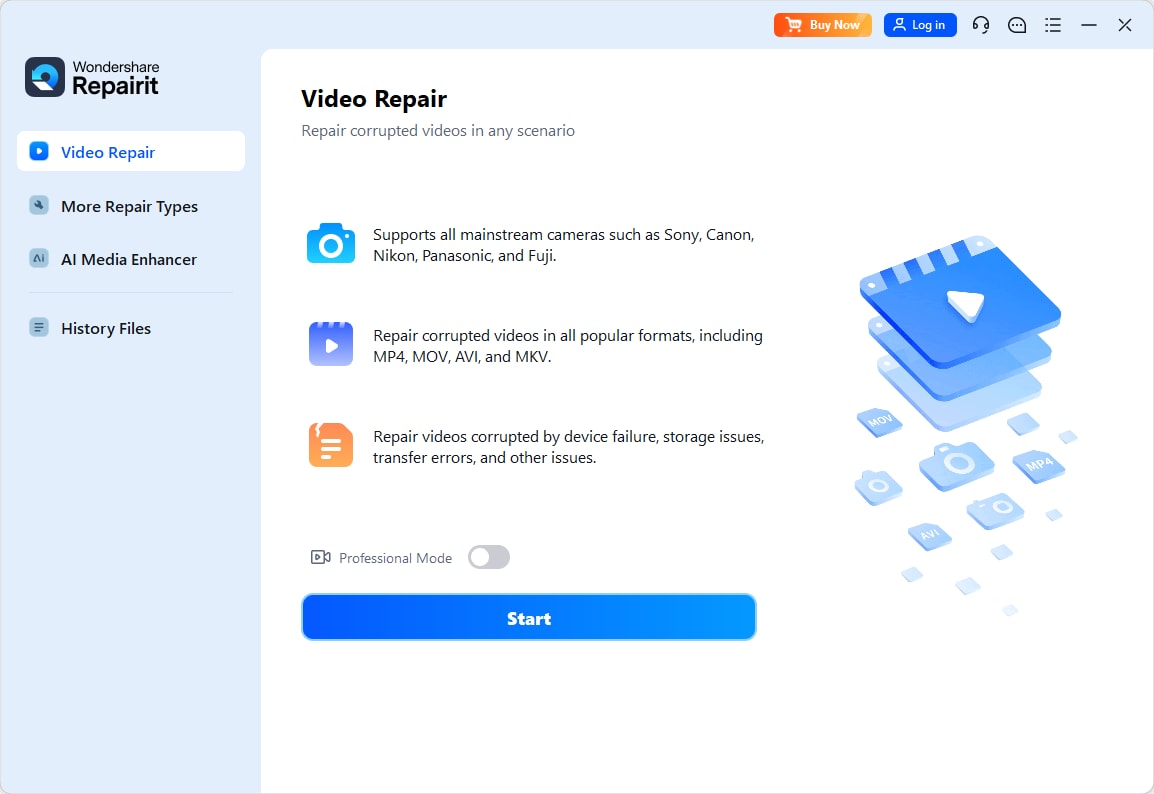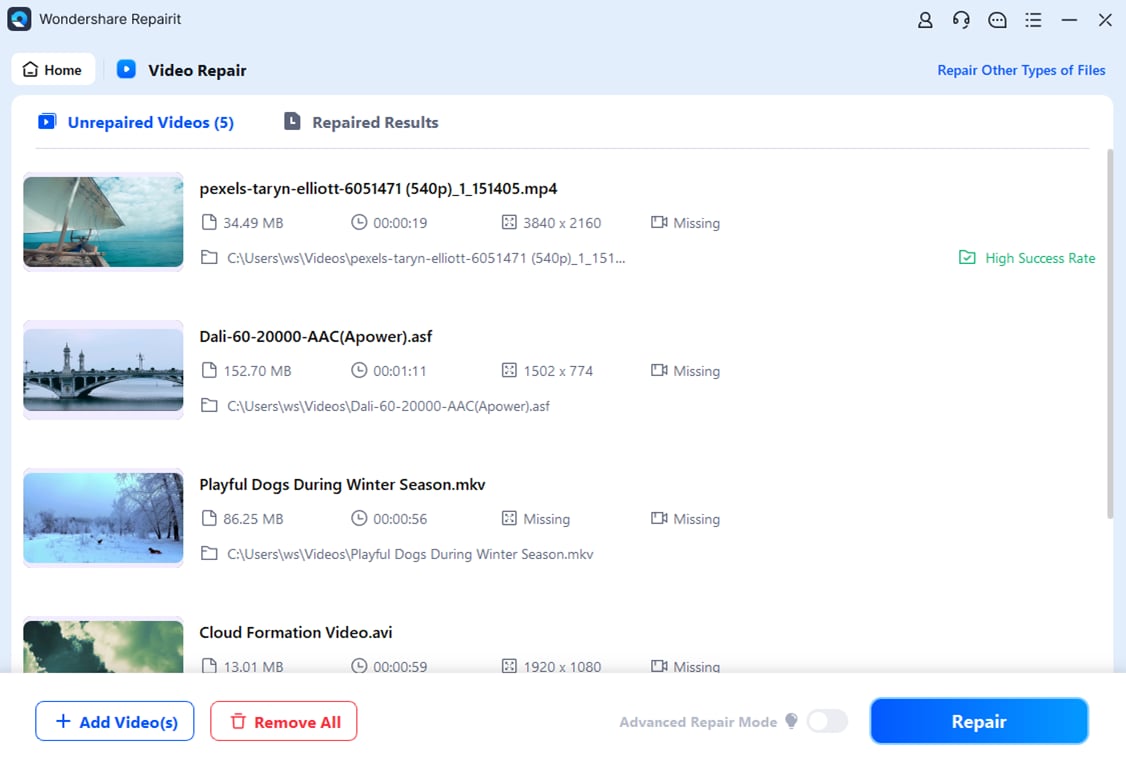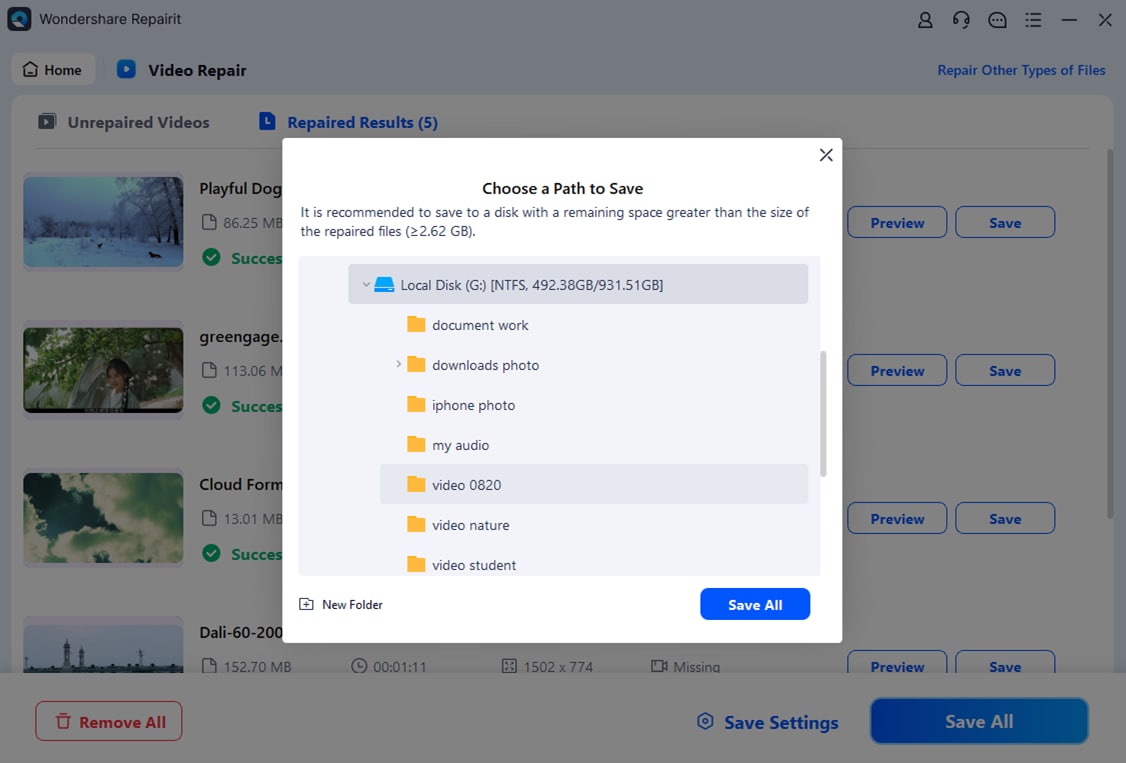“My Nvidia graphics card was not detected (LAPTOP). I’m not a computer guy and this error occur suddenly, can someone me fix this problem. I was just trying to install a game and when I open nvidia, it does not recognize my card, what should I do?”
“NVIDIA graphics card not detected” problem can be a confusing experience, especially if you're not tech-savvy. This guide seeks to enable you to address this problem using straightforward, clear instructions. We will go over the typical causes of your NVIDIA graphics card's non-detection and offer detailed methods to fix it. Follow along to have your graphics card functioning once more whether the device runs Windows 10 or 11.
In this article
Part 1: Common Reasons for NVIDIA Graphics Card Not Being Detected?
NVIDIA graphics cards are essential for high-performance computing, gaming, and professional applications. However, users may occasionally run across problems when the system does not detect their NVIDIA graphics card. Knowing the typical causes of this issue will facilitate diagnosis and effective resolution of it. The primary causes of an NVIDIA graphics card not being identified are as follows:
- Corrupted NVIDIA File: Normal operation of your NVIDIA graphics card can be seriously disrupted by corrupted files. From unexpected system failures to virus attacks to inadequate installations, this issue can arise from anything. If important NVIDIA files were corrupted, the system would not be able to find the graphics card, hence causing problems.
- Driver Issues: Facilitating communication between the operating system and the graphics card depends critically on drivers. The graphics card might not be found if the NVIDIA drivers are poorly installed, incompatible with the current OS version, or out of current. Typical driver-related issues include damaged driver files producing malfunctioning. Another issue can be incorrect installation or failed upgrades preventing the drivers from operating as expected.
- BIOS/UEFI Settings: Hardware recognition during boot procedure depends critically on BIOS/UEFI settings. Older BIOS/UEFI firmware or improper settings could prevent the system from spotting the NVIDIA graphics card. One issue on the graphics card is not being the main display device. If BIOS/UEFI firmware is outdated, it generates compatibility problems.
- Hardware Problems: Detecting faults with the graphics card or its connections can result from physical problems. This covers situations whereby the graphics card is either physically damaged or the PCI-E slot itself is physically damaged. Faulty power connections failing to provide enough power to the graphics card can also lead to NVIDIA graphics card not detected. Moreover, the graphics card is just loosely or incorrectly positioned in the PCI-E slot.
- Software Conflicts: Conflicts among the NVIDIA drivers and other programs could cause the graphics card to go undetectable. Recent software installations, system upgrades, or incompatible program presence can all lead to this problem. Recent Windows upgrades can create software conflicts. Other software interfering with the graphics card drivers, and background apps or services compromising driver performance could also cause problems.
Part 2: How to Fix NVIDIA Graphics Card Not Being Detected Issue?
When your NVIDIA graphics card not be detected, you have many choices for debugging the problem. These guidelines should help you to address the problem of your NVIDIA graphics card not being detected.
Method 1. Repair Corrupted NVIDIA File
Corrupted files could cause your NVIDIA graphics card to go undetectable, therefore stopping your system from identifying and using the hardware. Try Repairit Video Repair! This tool can restore missing components and guarantee your graphics card is correctly detected using the potent application.
Repairit Video Repair has a simple user-interface, designed to handle file corruption problems easily including, with NVIDIA graphics cards. Even users with limited technical knowledge may quickly fix NVIDIA file corruption problems. One of the most remarkable features is its strong repair capability. Repairit also ensures a great success rate in returning these files to their original condition. It maintains the integrity and performance of your graphics card.
Step 1: Open Repairit and then click the +Add button to add your NVIDIA graphics card file.

Step 2: Once the files are added, select Repair.

Step 3: Once the repair process is complete, you can preview the repaired files to ensure they are fixed correctly. Click on the Save button to save the repaired files to your desired location.

Fix NVIDIA Graphics Card Not Being Detected Issue Now

Method 2. Update or Reinstall NVIDIA Drivers
Your graphics card must interact with your operating system using drivers. Your graphics card might not be found if your drivers are faulty, obsolete, or incorrectly installed. See these guidelines to reinstall or update your NVIDIA drivers:
Step 1: Press Win + X and select Device Manager.

Step 2: Expand the Display adapters section.

Step 3: Right-click on your NVIDIA graphics card and select Update driver.
Step 4: Choose Search automatically for updated driver software.

Step 5: Follow the on-screen instructions to complete the update.
Instructions for Downloading and Installing Drivers from the NVIDIA Website:
Step 1: Visit the NVIDIA Driver Downloads page.
Step 2: Enter your graphics card details and click Search.

Step 3: Get the most recent driver for your graphics card.
Step 4: Execute the downloaded installer and follow the on-screen prompts to finish the installation.
Method 3. Check BIOS/UEFI Settings
Your BIOS/UEFI settings can occasionally be keeping your system from seeing the graphics card. To verify and change these values:
How to Access BIOS/UEFI Settings:
- Restart your computer.
- During startup, press the BIOS key (commonly F2, Del, or Esc).
- Navigate to the Advanced or Boot tab.
Instructions for Ensuring the Graphics Card is Set as the Primary Display Device:
- In the BIOS/UEFI settings, look for Primary Display or Init Display First.
- Set it to PCI-E or PEG.
- Save the changes and exit BIOS/UEFI.
Steps to Update BIOS/UEFI Firmware:
- Visit your device’s motherboard manufacturer's website.
- Download the latest BIOS/UEFI firmware update.
- Adhere to the manufacturer's guidelines to update the BIOS/UEFI.
Method 4. Verify Hardware Connections
Detection errors also arise from physical problems with the graphics card or its connections. Here's a check-through guide:
How to Check if the Graphics Card is Properly Seated:
- Shut down your computer and unplug it from the power source.
- Open the computer case.
- Ensure the graphics card is firmly seated in the PCI-E slot.
- Inspect for any visible damage or loose connections.
Instructions for Checking Power Connections:
- Ensure the power connectors are securely plugged into the graphics card.
- Check the power supply unit (PSU) to confirm it provides enough power for the graphics card.
Troubleshooting Potential Hardware Faults:
- Try using a different PCI-E slot if available.
- Test the graphics card in another computer to rule out a faulty card.
- Replace the PSU if it’s not providing adequate power.
Method 5. Resolve Software Conflicts
Conflicts between your NVIDIA drivers and other programs could stop the detection of your graphics card. To settle these issues:
Step 1: Press Win + R, type msconfig, and press OK.

Step 2: In System Configuration, navigate to the Services tab.

Step 3: Check Hide all Microsoft services, then disable any suspicious or unnecessary services.
Step 4: Go to the Startup tab and click Open Task Manager.

Step 5: Disable startup programs that might conflict with the graphics card.
Part 3: Additional Tips to Prevent Graphics Card Not Detected Nvidia
You should act pro-actively to prevent problems with your NVIDIA graphics card not being found. Regular maintenance and careful attention will help to guarantee that your system always recognizes your graphics card and operates as it should. These simple guidelines will help you avoid NVIDIA graphics card not detected issue.
Tip 1: Keep Your System and Drivers Up to Date
To address discovered problems and maximize performance, NVIDIA frequently releases driver upgrades. Maintaining current for your drivers helps you to prevent problems and guarantee that your system interfaces well with the graphics card. Regular operating system updates also help to maintain everything functioning smoothly and compatible with new hardware and applications.
Tip 2: Regularly Check Hardware Connections
Movement or vibrations over time could cause pieces to break free. Check routinely that all power connections are tight and that your graphics card is correctly installed in the PCI-E slot. To keep adequate ventilation and avoid overheating, which could lead to hardware problems, also clear any dust or trash from your computer.
Tip 3: Monitor System Performance
Monitoring the performance of your system will enable you to identify possible problems. Track GPU performance, temperature, and use by means of system monitoring tools. Early indicators of issues that can cause your graphics card to not be identified are unusual performance numbers or regular crashes. Your NVIDIA graphics card will remain running if you pay attention to these indicators and take quick care of any problems.
Conclusion
It is upsetting to find that the " NVIDIA graphics card not detected" problem exists. Nevertheless, you can efficiently troubleshoot and fix the problem by knowing the typical causes behind it and applying the given solutions. On your Windows 10 or 11 PC, the actions offered can help guarantee your NVIDIA graphics card is correctly detected and operating. To avoid future problems, keep your system and drivers current; routinely check hardware connections; and track system performance.
FAQ
-
What should I do if my NVIDIA graphics card is not listed in Device Manager?
Ensure the card is properly seated in the PCI-E slot and all power connections are secure. If it still doesn't appear, try updating or reinstalling the drivers from the NVIDIA website or using GeForce Experience. Also, check BIOS/UEFI settings to make sure the card is enabled. If nothing else works, attempt using a different PCI-E slot. -
What are the signs of a failing NVIDIA graphics card?
Signs include strange lines or colors on your screen (artifacts), frequent crashes or freezes, blue screens (BSOD), poor performance in games, and the card not being detected by the system. These issues may indicate that the card is malfunctioning or failing. -
Why does my system crash or freeze when using the NVIDIA graphics card?
Crashes or freezes can be due to outdated or corrupted drivers, overheating, insufficient power supply, hardware faults, or software conflicts. Checking and addressing these areas can help resolve the problem.


 ChatGPT
ChatGPT
 Perplexity
Perplexity
 Google AI Mode
Google AI Mode
 Grok
Grok

